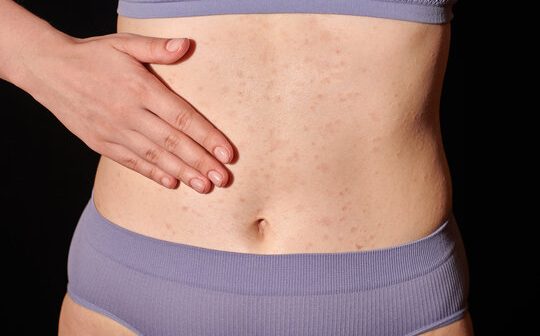The scorching Indian summer brings sunshine and joy, but also the discomfort of prickly heat rashes. These itchy red bumps, particularly common in the nether regions, can put a damper on your summer fun. Underwear and panty rashes, also known as intertrigo, are a common summer woe in India, affecting people of all ages. However, fret not! By understanding the causes and implementing some simple preventive measures, you can keep your summer cool and comfortable.
Understanding the Culprits: Why Do Underwear Rashes Occur?
Several factors contribute to the development of underwear rashes in the hot and humid Indian summer:
- Friction and Chafing: Constant friction between damp skin and your underwear can irritate the delicate skin in the groin area. This friction is exacerbated by tight-fitting underwear, rough fabrics, and excessive sweating.
- Moisture Buildup: Summer’s heat and humidity lead to increased sweating, creating a moist environment in the groin area. This moisture creates a breeding ground for bacteria and fungus, which can further irritate the skin.
- Chemical Irritants: Harsh detergents, fabric softeners, or fragrances used in some underwear can irritate sensitive skin. Switching to gentle, fragrance-free products can make a significant difference.
- Medical Conditions: Certain medical conditions like diabetes, obesity, or fungal infections can increase the risk of developing intertrigo. If you experience persistent rashes, consult a doctor to rule out any underlying medical issues.
Prevention is Key: Keeping Summer Rashes at Bay
By adopting some simple strategies, you can significantly reduce your chances of developing underwear rashes:
- Choose Breathable Fabrics: Opt for underwear made from breathable fabrics like cotton. Cotton allows for better air circulation, keeping the groin area cooler and drier.
- Looser is Better: Ditch the tight-fitting underwear and embrace looser styles that allow for better airflow and prevent excessive friction. Boxer briefs for men and cotton briefs for women are good options.
- Maintain Hygiene: Shower or bathe regularly, paying particular attention to the groin area. Pat the area dry thoroughly after bathing, as moisture buildup can worsen rashes.
- Moisture Management: Staying hydrated helps regulate body temperature and reduce excessive sweating. Carry a water bottle with you and sip on water throughout the day.
- Antiperspirants and Talcum Powder: Consider using a gentle antiperspirant to manage underarm sweat and minimize moisture buildup. Talcum powder can also be used sparingly to absorb moisture, but ensure it’s fragrance-free and non-clumping to avoid further irritation.
- Change is Good: Don’t wear the same underwear for extended periods, especially after sweating. Change into fresh, dry underwear frequently throughout the day.
The Rashes Have Arrived: Soothing and Treating Discomfort
If preventive measures don’t suffice and you find yourself battling an existing rash, here’s how to find relief:
- Soothe the Itch: Resist the urge to scratch, as this can worsen the rash. Apply a cool compress to the affected area to reduce inflammation and itching. Calamine lotion can also provide some relief.
- Let it Breathe: Wear loose cotton clothing and avoid tight-fitting garments until the rash heals. This allows for better air circulation and promotes faster healing.
- Topical Treatments: Over-the-counter topical ointments containing zinc oxide or petroleum jelly can help soothe the rash and promote healing. Hydrocortisone cream can also be used for short periods to reduce inflammation, but consult a doctor before using it for extended durations.
- Dietary Changes: Spicy or acidic foods can aggravate rashes. Consider reducing your intake of these foods while the rash heals.
- When to See a Doctor: If the rash is severe, persistent, or accompanied by fever, pus, or worsening symptoms, consult a doctor. They might prescribe stronger topical medications or antifungal creams to address the cause of the rash.
Natural Remedies: Nature’s Arsenal Against Rashes
In addition to conventional treatments, some natural remedies might offer relief for mild rashes:
- Aloe Vera: Aloe vera gel possesses anti-inflammatory and cooling properties that can soothe the itch and promote healing. Apply fresh aloe vera gel directly to the affected area.
- Oatmeal Bath: Oatmeal baths can provide relief from the itching and irritation associated with rashes. Add finely ground oatmeal to lukewarm bathwater and soak for 15-20 minutes.
- Coconut Oil: Coconut oil has antifungal and antibacterial properties that can help combat rashes. Apply virgin coconut oil directly to the affected area after a shower.
Conclusion: A Summer Without Rashes
Underwear rashes can be a nuisance, but





